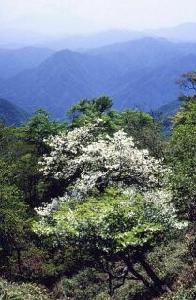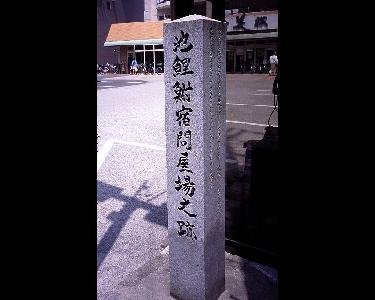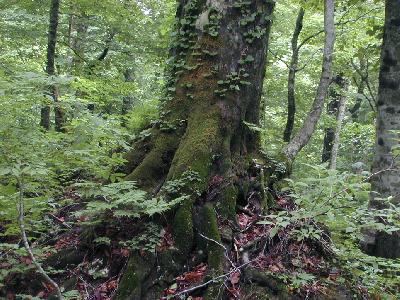|
Mt. Hinokiboramaru with an altitude of 1601 m is on the border of Tsukui-cho in Sagamihara City and Yamakita-cho in Ashigara-Kami-gun in Kanagawa Prefecture. It is the second highest peak in the Tanzawa Mountains after 1673 m Mt. Hirugatake. Though located in the center of the deepest mountains in the western part of the Tanzawa Mountains, a finely arranged mountain trail is provided and there are no such places as you might loose your way or get into trouble.
The name “Hinokiboramaru” comes from the stream named “Hinokibora,” a feeder stream of the Kurokura River, which flows out of this mountain down to the south.
The area near the top of the mountain is the virgin forest of beech trees. The contrast between greenish yellow young leaves and the trunks with white spots is very beautiful. The beech forest is selected as one of Kanagawa’s 50 Excellent Forests. On the south side of the mountain is the colony of Shiroyashio-tsutsuji (Rhododendron quinquefolium). At the end of May every year, the mountain is jammed with people who come to enjoy viewing these cute flowers. Mt. Hinokiboramaru is one of the most popular mountains in the Tanzawa Mountains.
The name “Hinokiboramaru” comes from the stream named “Hinokibora,” a feeder stream of the Kurokura River, which flows out of this mountain down to the south.
The area near the top of the mountain is the virgin forest of beech trees. The contrast between greenish yellow young leaves and the trunks with white spots is very beautiful. The beech forest is selected as one of Kanagawa’s 50 Excellent Forests. On the south side of the mountain is the colony of Shiroyashio-tsutsuji (Rhododendron quinquefolium). At the end of May every year, the mountain is jammed with people who come to enjoy viewing these cute flowers. Mt. Hinokiboramaru is one of the most popular mountains in the Tanzawa Mountains.
| [+ADDRESS] | 
|

















